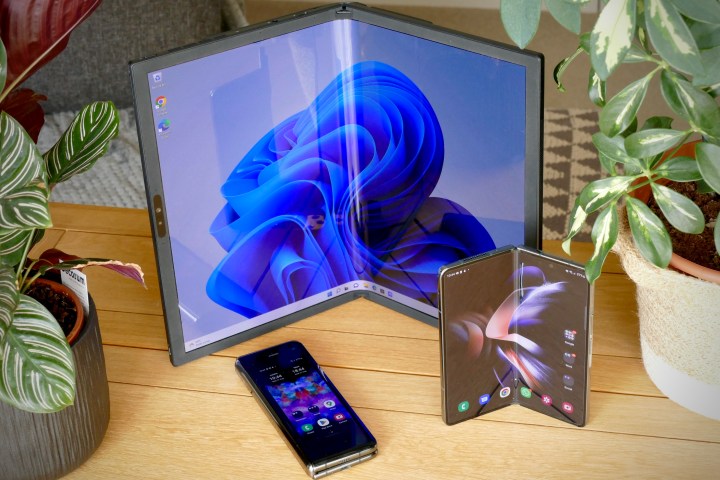There might be at least seven foldable laptops released in 2023, according to industry analyst Ross Young.
The founder of the Display Supply Chain Consultants (DSCC) research firm has detailed that the foldable laptop market could mature during the next year, with more players introducing variants of PCs with displays that bend.

DSCC expects there will be a “34% increase in foldable handset shipments in 2023,” with one Chinese brand set to launch at least four foldable laptop models. However, due to the expected recession and uncertain demand for the form factor, brands developing foldable laptops are expected to do so in limited volumes.
Manufacturers including Lenovo, Asus, and HP have already introduced several iterations of foldable laptop models at this point, so follow-ups to devices, including the Asus ZenBook Fold 17, ThinkPad X1 Fold, and HP’s upcoming foldable are almost certain.
Notebookcheck speculates that new foldable laptop options could have different brands experimenting in new ways, such as larger screens.
We’ve already seen Lenovo expand its ThinkPad X1 Fold from a 13.3-inch display on the first generation to a 16.3-inch screen on the second generation. It also has new functions, including being able to be propped up via a stand accessory in both portrait and landscape modes.
Additionally, DSCC expects 2023 to bring the launch of at least 23 foldable phones and the introduction of the first rollable smartphone. Currently, every major Android brand is said to have a rollable display prototype or patent associated with rollable display technology, including Google.
However, Oppo is the only brand that has openly shown a working prototype of its rollable display devices in the X phone. The device is able to expand from a 6.7-inch to a 7.4-inch display using an automated “Roll Motor.”
Though details about the Oppo prototype are known, this device does not appear to be the rollable smartphone that will release in 2023.
DSCC claims it will confirm the name of the actual first rollable display phone maker at a later time, adding that the device will be made by a Chinese company that will use an OLED panel display manufactured by a Korean supplier.



